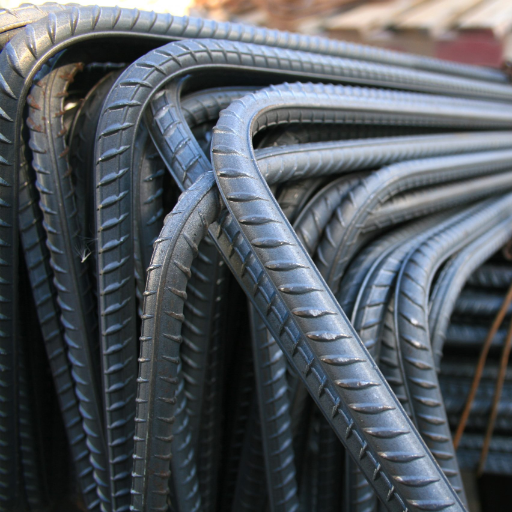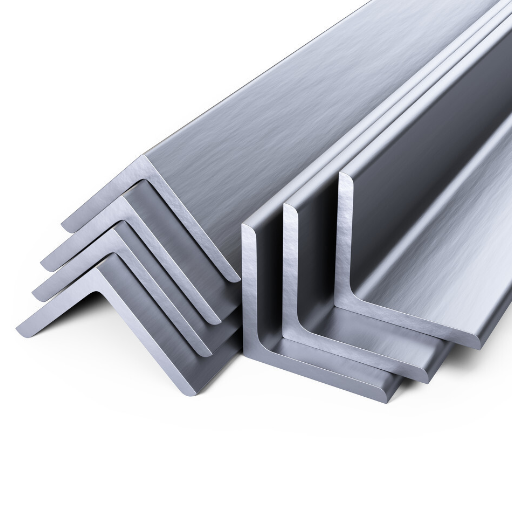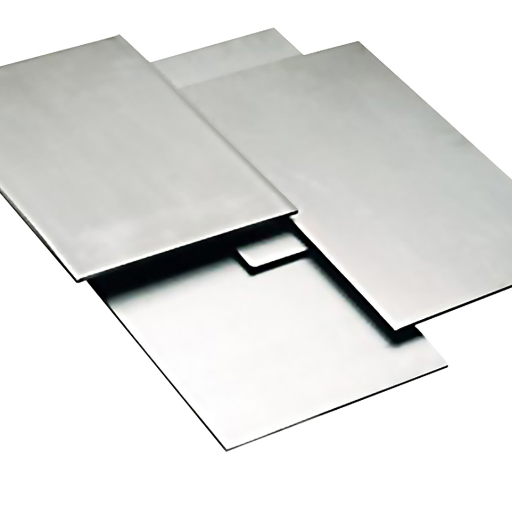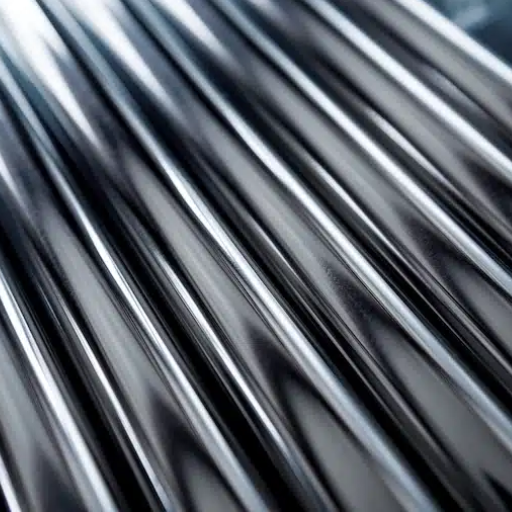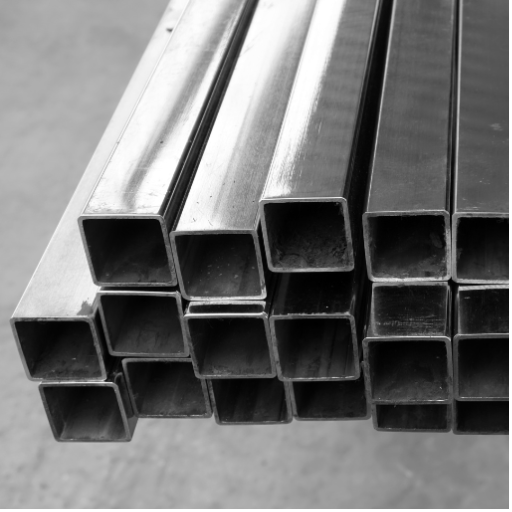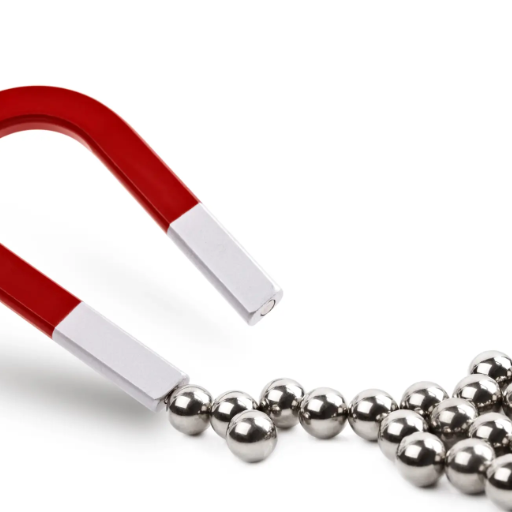We know that all over the world, stainless steel is recognized for its use in numerous fields because of its strength and versatility. One of the many materials used in making an item is stainless steel. Here, we discuss how corrosion resistant stainless steel is and how its properties can be enhanced with the use of nickel. In this blog, we will discuss in-depth the amplifying gains nickel provides for the mechanical properties, corrosion resistivity, and durability of steel. Furthermore, we will go over the varying grades of stainless steel and how they are applicable to different industries, along with the economic and environmentally sustainable repercussions. By the end of the blog, you will fully understand the implications of nickel in making and using stainless steel.
What is the Role of Nickel in Stainless Steel?

Nickel considerably improves staineless steel as it increases its strength, ductility, and resistance to corrosion. Transformation of nickel into 300 series stainless steels enablesthe easier handling and application of stainless steels. This addition enhances material’s resistance to harsh temperatures and environments, making it useful for aerospace, construction, and chemical processing industries. Besides, it gives more uniform and attractive finish which is important for construction and consumer goods. Its addition provides high-performance stainless steels because they are reliable and can withstand tough industrial and operational conditions without failure.
How does Nickel contribute to corrosion resistance?
Aggravation to more advanced alloys like steel, needs special features to be provided. Along with corrosion-resistive properties and construction materials, special features of aged environments are also required. Weather extremes such as heightened temperature, or highly aggressive chemicals would greatly affect the materials. In such cases, alloy materials such as steel, come under severe attacks of localized corrosion vectors like structural pitting and stress corrosion cracking. Stress corrosion could greatly affect the steel’s functionality and cause major flukes in structures. Parts composed of stainless steel require shield constructs to protect them from such anomalous actions.
Why is Nickel important in austenitic stainless steels?
The augmentation of austenitic stainless steel cannot be achieved without the addition of nickel. It is needed to preserve the austenitic structure making the material non-magnetic and ductile at lower and higher temperatures. Nickel is known to improve the steels as well as the shape of refined alloys mechanically and along with bearing the brunt of corrosion, helps retain features in acidic and chloride dense environments. It also aids in the welding and fabrication of materials while securing damage free performance under operational demands. These features of austenitic stainless steels make them favorable and useful in marine, chemical, and high temperature spheres and endeavors.
What are the benefits of Nickel in stainless steel alloys?
Stainless steel alloys prove to be more effective when nickel is added to the alloy, especially with the harsh environments like acidic, saline, and high temperature surroundings. Austenitic microstructure formation is also benefitted from the aid of nickel. This increases the ductility and toughness for the alloy while also improving the mechanical stress resistance. On top of that, nickel ensures stainless steel retains its integrity at higher temperatures and stress. Applications in the marine, chemical processing, and energy sectors require not just good durability, but also improved thermal resistance along with better formability and weldability which further highlights the need for nickel.
How Much Nickel is Typically Found in Different Stainless Steel Grades?

The nickel composition in stainless arr is based on the type and the need of each composition. For instance, austenitic stainless steels like 304 and 316 grades typically have nickel content of 8% to 12%. Grade 304 typically contains almost 8% nickel. Whereas Grade 316 contains more, often 10% to 12%, to improve its corrosion resistance, especially in areas with chlorides. On the other hand, ferritic and martensitic stainless steels contain little to no nickel at all because they need to rely on chromium and other elements for their characteristics. Duplex stainless steels have a nominal nickel content of 4% to 7% as they have strength and resist corrosion efficiently.
What is the nickel content in 304 stainless steel?
The amount of nickel in 304 stainless steel also varies from 8% to 10.5%. You can notice that this amount improves the metals ion resistance to corrosion greatly in moderately acidic and neutral environments which results in a superductile material. All of these properties combined makes 304 stainless steel one of the most commonly used materials in different industries.
How does Nickel content differ in 304 and 316 grades?
316 does contain more nickel than 304 and this is the only difference between them. 304 contains 8%-10% nickel while 316 is estimated to be 10%-14% with additional molybdenum of 2%-3%. The higher chlorides and harsh chemicals used in marine and chemical processingincreases the resistance to corrosion and helps in making the 316 grade more suited to marine environments.
Are there stainless steel grades that contain nickel?
Yes, many grades of stainless steel use nickel as their main component, some of which are categorized into austenitic including:
- Austenitic Stainless Steel: 304 and 316, which are parts of the 300 series use between 8%-14% of nickel hence transform them into stronger and durable metals increasing their use in industries.
- Duplex Stainless Steel: Other duplex covers also contain 1% -7% nickel but do so in much smaller quantities.
- Precipitation-Hardening Stainless Steel: The alloy 17-4 PH is noted for having nickel added to it so that greater strength and pertinence to corrosion can be attained via heat treatment.
Nickel greatly contributes in reinforcing the austenitic framework and enhancing functions in highly demanding situations, for instance, the marine or chemical sectors. These grades would not be as versatile or durable without it.
Does Stainless Steel Cookware Leach Nickel?

Stainless steel cookware does leach nickel, but not to a dangerous level. The grade of stainless steel, the cooking methods, and the type of food being cooked will all affect the quantity of leakage. Stainfuls steel grades 304 and 316 are higher tiered and have more nickel, meaning they are more likely to leach, especially with acidic foods, during prolonged cooking, or at high temperatures. In any case the amount of nobel prize winning scientist leached nickel remains safe for public consumption. People suffering from a nickel allergy or sensitivity might need to switch from the alternatives with higher nickel 400-series stainless steel, which has a lower nickel concentration, may be more suitable.
What are the risks of nickel leaching in cookware?
The possibility of nickel leaching from cookware mainly poses risks to people with preexisting nickel allergy conditions. Nickel leaching is capable of inducing allergic reactions including mild skin rashes and even chronic eczema in some of the most sensitive people. Prolonged cooking, particularly with acidic foods, and the use of stainless steel cookware, even of the 304 or 316 grade alloys, increases leaching risks. As an example, this group does not suffer in any appreciable way from these nickel exposures because of the very small amounts that are believed to be released. However, after a while, these exposures could potentially result in negative health impacts. Still, some factors regarding an individual’s health and the cookware’s relation to one’s health should be considered.
How to identify if cookware might contain nickel?
In case you wish to evaluate whether the cookware may contain nickel or not, try the following steps:
- Material Labels and Specifications: Look at the labeling or the description provided by the manufacturer. Mosts brands of steel cookware put the grade on the pack for example one will see “18/10” or “18/8” which tells you that the first number is chromium % and the second one is nickel %. The higher the number, the more likely it is that the user will find grade 304 or 316, which contain nickel.
- Magnet Test: Test the cookware with a magnet. Most stainless steel with nickel content (like 304 or 316 austenitic grades) is non-magnetic. If the cookware fails to hold the magnet, it is likely to contain nickel, albeit not conclusively evidentiary.
- Contact the Manufacturer: For accurate details, contact the manufacturer. They will have the exact material specifications and will be able to verify if the cookware contains nickel.
These options allow people to make educated choices regarding the safety of the cookware based on the individual’s health needs or sensitivities.
Is using stainless steel safe for those with a nickel allergy?
Using stainless steel with a nickel allergy comes down to the type of alloy and the person’s level of sensitivity. Stainless steel types 304 and 316 have nickel, but due to the alloy’s structure, most nickel is captured, and only a minimal amount is released during regular usage. For those with extreme nickel allergies, stainless steel cookware is safe. Although, prolonged exposure of acidic foods may leave a small trace of nickel. On the other hand, 18/0 grade stainless steel contains no nickel and is best suited for people with high sensitivity. It’s important to check with the manufacturer and try it out personally.
Can Stainless Steel Be Made Without Nickel?

Stainless steel can be generated without nickel components; produced stainless steel 18/0 is an example of this. Chrominium is utilized as an alloying element which provides nicket free stainless steel and 18/0 grade with durable corrosion resistance. These grades gain many benefits of stainless steel such as rust and stain resistance. Those sensitive to nickel or allergic to nickel would benefit from using stainless steel devoid of nickel.
What are the characteristics of ferritic stainless steels?
Chromium and iron mainly make up ferritic stainless steels which contains 10.5% to 30% chromium. Ferritic steels are magnetic, resistant to corrosion, and almost immune to stress corrosion cracking. With good thermal conductivity, they also retain strength at higher temperatures. Ferritic stainless steels have lower ductility and weldability than their austenitic grades, which makes them less useful in some areas. With sensible corrosion resistance, these steels are often used as a better priced solution in many areas due to their low nickel levels.
How does ferritic differ from austenitic in terms of nickel content?
The nickel concentration is what distinguishes ferritic from austenitic stainless steels. Nickel is found in a greater range in austenitic stainless steels, greater than 8-10%, which along with ductility adds to corrosion resistance. In comparison, the ferritic grades contain nearly no nickel or less than 1%. This makes ferritic stainless steels cheaper, but also accounts for decreased ductility which is elevated with higher ferretic grades, and slight increase in corrosion resistance on austenitic stainless steels.
What are the Properties of Nickel-Containing Stainless Steel?

Stainless steel with nickel has a number of advantages which makes it useful in various fields. Adding nickel to the alloy makes its corrosion resistance even better in high risk environments because it helps maintain the austenitic structure of the alloy and also prevents oxidation. It also enhances ductility and toughness even at low temperatures which is perfect for cryogenic applications. The amazing weldability and formability allow it to develop complex parts that are also very tough. Nickel-containing stainless steel is highly used in chemical processing, construction, and transportation because of the long-term durability and low maintenance that it provides with its long-lasting austenitic structure.
How does Nickel affect the formability of stainless steel?
The alloy gaining austenite and possessing better cryogenic features increases the formability of the alloy. Like mentioned above, the alloy possessing low work hardening rate makes it easy for the alloy to be shaped without failing. Also, assisted ductility allows bended components to be drawn deeply. Unlike others, these features assist in achieving precision with advanced geometry stance allowing for enduring structures.
What is the impact on weldability when Nickel is added?
As a result of having nickel included in the alloy, the weldability significantly gets better because of how tough the heat affected zone (HAZ) gets along with the lower chances of cracking. Ductility and thermal expansion are very crucial for high quality welds which is made sure with nickel containing stainless steel because it offers austenitic structure mit stabilization. In addition to that, nickel also makes sure that there is minimal residual stress and distortion during cooling. Because of those attributes, complex patterns of welding along changing temperatures becomes reliable and durable with the nickel containing steels.
How does Nickel enhance the versatility of stainless steel?
Steps or processes in industries like cryogenic storage or marine environments, require high levels of customization for alloys. These changes are obtained by including nickel in the stainless alloys which adjust the performance for demanding applications such as the ones stated above. Nickel aids improving these alloys by preventing oxidation and stabilizing the austenitic structure which additionally serves to cryogenic temperature stabilization, cryogenic ductility, and toughness.
References
Frequently Asked Questions (FAQ)
Q: What are the advantages of the use of nickel alloys in stainless steel?
A: Nickel alloys in stainless steel increases its strength, ductility, and capability to withstand high temperature. These factors make them appropriate for different uses, particularly in fields that require high-performance materials.
Q: What is the combination of nickel and chromium doing in stainless steel?
A: Nickel and chromium complement one another in stainless steel by making it more resistant to corrosion. Chromium creates an oxide layer while nickel retains austenitic structure which enables the steel to endure tremendous energy without shattering.
Q: Which are the nickel containing stainless steels?
A: The most popular nickel containing stainless steels are austenitic alloys which include 304 and 316 stainless steel. These alloys generally have higher value of nickel which contributes to remarkable resistance to corrosion and ease of shaping.
Q: What is the amount of nickel present in stainless steel in general?
A: Stainless steel in general has low amounts of nickel which is between 8% to 14% in austenitic stainless steels. This value changes depending on the grade of stainless steel being manufactured.
Q: Is there an option for stainless steel without nickel?
A: There is an option for stainless steel without nickel, notably in applications where allergies to nickel may pose a concern. These alloys are generally ferritic and martensitic grades, which do not have nickel, but do have some level of good corrosion resistance.
Q: What is the relation between global nickel production and the production of stainless steel?
A: A good amount of global nickel production goes into the production of stainless steel. There is an increasing demand for stainless steel in the market, which leads or pushes the requirement of nickel too. Nickel definitely becomes essential in the process.
Q: What is the relevance of nickel in regard to cookware made of stainless steel?
A: Nickel has relevance in regard to cookware made of stainless steel since it helps to increase the level of corrosion and in most cases, staining resistance. This means that the cookware that is made of stainless steel is long lasting and retains its appealing look even with many uses.
Q: What is the impact of nickel in the work of stainless steel?
A: The impact of nickel in the work of stainless steel is that it increases the malleability and weldability of the material. Stainess steels with nickel can deform easily and they can all be put together easily which makes it easy to manufacture.

